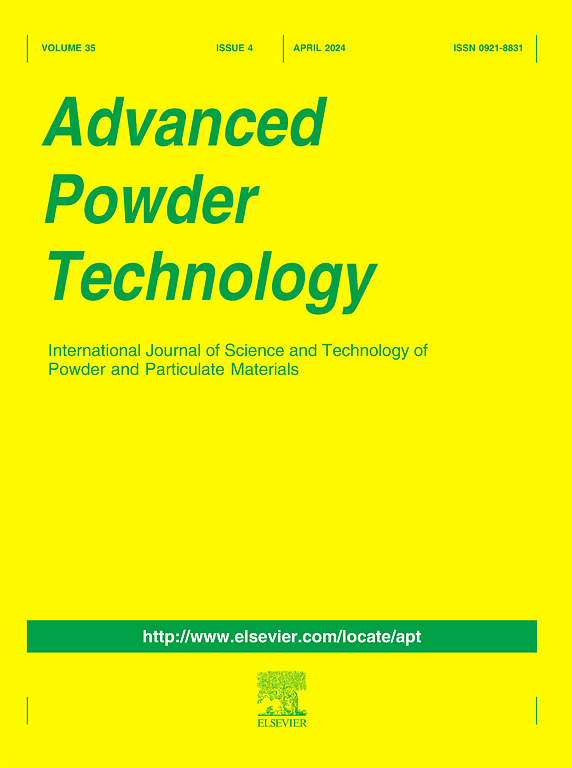Alkaline-earth metal-doped In2O3 microtubes: a simple and efficient approach for detection of ppb-level formaldehyde gas
IF 4.2
2区 工程技术
Q2 ENGINEERING, CHEMICAL
引用次数: 0
Abstract
Metal doping has been widely acknowledged as a facile yet impactful approach to optimize the gas-sensing performance of metal oxide semiconductors. In this study, stable-valence alkaline-earth metals (Ca, Sr, and Ba) are incorporated into In2O3 microtubes to investigate the influence of ionic radius on formaldehyde gas-sensing performance. The results indicate that heterogeneous doping leads to a reduction in average grain size and bandgap, while concurrently increasing the specific surface area and the concentration of oxygen vacancies. The formaldehyde response values increase from 36.18 for In2O3 sensor, to 95.66 for In2O3-Ca sensor, to 107.93 for In2O3-Sr sensor, and up to 154.32 for In2O3-Ba sensor, correlating with the ionic radius of the doped-metals. The In2O3-Ba sensor notably demonstrates excellent selectivity toward formaldehyde, long-term stability, and a reduced operating temperature of 190 °C. The increase in ionic radius is associated with greater lattice distortion in the In2O3-Ba microtubes, a reduction in average grain size, and an elevated concentration of oxygen vacancies. Larger radius metal-doping significantly elevates oxygen vacancy density and chemisorbed oxygen content. Density functional theory calculations reveal that the adsorption energy for formaldehyde molecules on the In2O3-Ba sensor is the lowest at −1.75 eV. The enhanced vacancy and chemisorbed oxygen from acceptor Ba3+-doping into the n-type In2O3-Ba sensor facilitate the excellent gas-sensing performance, highlighting the contribution of the large-radius acceptor-doping to the high-performance In2O3 gas sensor.

碱土金属掺杂In2O3微管:一种检测ppb级甲醛气体的简单高效方法
金属掺杂被广泛认为是优化金属氧化物半导体气敏性能的一种简单而有效的方法。本研究将稳定价碱土金属(Ca、Sr和Ba)掺入In2O3微管中,研究离子半径对甲醛气敏性能的影响。结果表明,非均相掺杂导致平均晶粒尺寸和带隙减小,同时增加了比表面积和氧空位浓度。与掺杂金属离子半径相关,In2O3传感器的甲醛响应值从36.18增加到95.66,In2O3- ca传感器的甲醛响应值增加到107.93,In2O3- ba传感器的甲醛响应值增加到154.32。In2O3-Ba传感器对甲醛具有良好的选择性,长期稳定,工作温度降低到190℃。离子半径的增加与In2O3-Ba微管中更大的晶格畸变、平均晶粒尺寸的减小和氧空位浓度的升高有关。较大半径的金属掺杂显著提高了氧空位密度和化学吸附氧含量。密度泛函理论计算表明,In2O3-Ba传感器对甲醛分子的吸附能最低,为- 1.75 eV。在n型In2O3- ba传感器中掺杂Ba3+增强了空位和化学吸附的氧,促进了优异的气敏性能,突出了大半径受体掺杂对高性能In2O3气体传感器的贡献。
本文章由计算机程序翻译,如有差异,请以英文原文为准。
求助全文
约1分钟内获得全文
求助全文
来源期刊

Advanced Powder Technology
工程技术-工程:化工
CiteScore
9.50
自引率
7.70%
发文量
424
审稿时长
55 days
期刊介绍:
The aim of Advanced Powder Technology is to meet the demand for an international journal that integrates all aspects of science and technology research on powder and particulate materials. The journal fulfills this purpose by publishing original research papers, rapid communications, reviews, and translated articles by prominent researchers worldwide.
The editorial work of Advanced Powder Technology, which was founded as the International Journal of the Society of Powder Technology, Japan, is now shared by distinguished board members, who operate in a unique framework designed to respond to the increasing global demand for articles on not only powder and particles, but also on various materials produced from them.
Advanced Powder Technology covers various areas, but a discussion of powder and particles is required in articles. Topics include: Production of powder and particulate materials in gases and liquids(nanoparticles, fine ceramics, pharmaceuticals, novel functional materials, etc.); Aerosol and colloidal processing; Powder and particle characterization; Dynamics and phenomena; Calculation and simulation (CFD, DEM, Monte Carlo method, population balance, etc.); Measurement and control of powder processes; Particle modification; Comminution; Powder handling and operations (storage, transport, granulation, separation, fluidization, etc.)
 求助内容:
求助内容: 应助结果提醒方式:
应助结果提醒方式:


